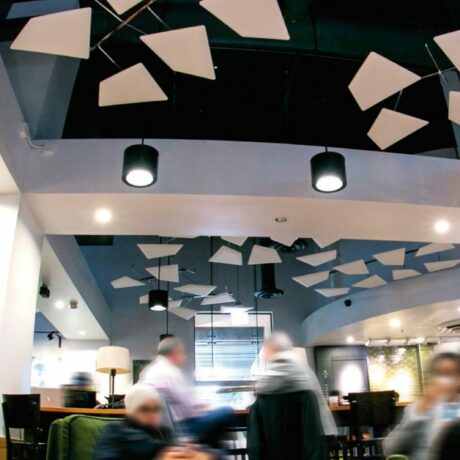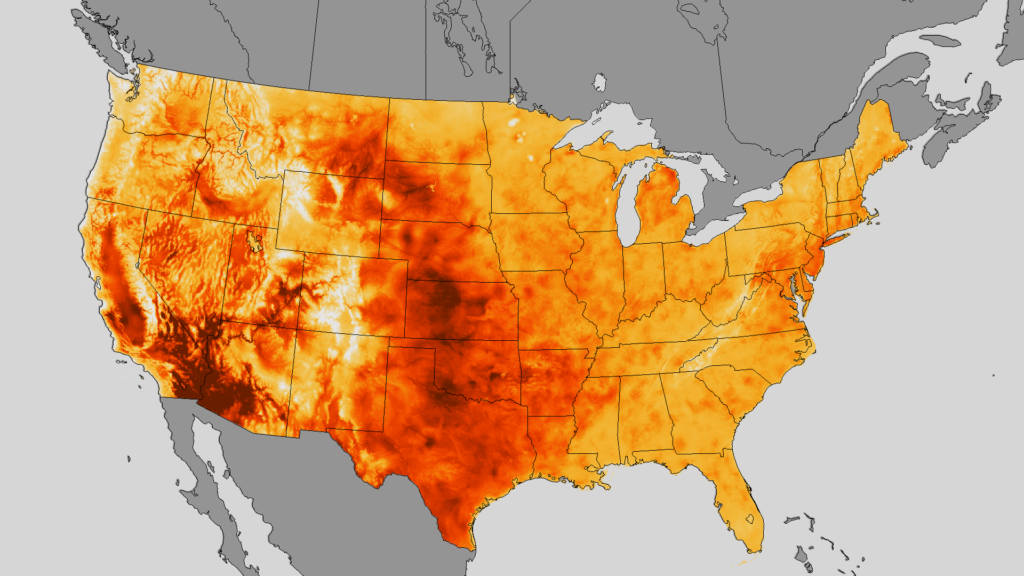
What Is With This Heat?!?! We Asked an Expert
The central part of the United States is burning! It seems that every day the temperature goes over 100° Fahrenheit. On July 21st, the temperature in our headquarters in Fort Worth reached 107°! Yet, for some reason, at that same hour of the day, it was 70° in Mexico City and 65° degrees in Quito, Ecuador – which is only 15 miles from the equator! We decided to reach out to an expert— Senior Meteorologist Jack Boston of KAKE (the ABC Affiliate) in Wichita, KS, where they were also experiencing record high temperatures. Here’s what he had to say:
“The reason both locations, Mexico City, Mexico and Quito, Ecuador have much lower temperatures that Fort Worth, Texas is really very simple! It is due to the differences in elevation. The temperature 99 percent of the time is warmest at the surface at any given location. In general, the lapse rate is 9.8 degrees Celsius per 1000-meter increase in elevation (5.4 degrees Fahrenheit per 1000 feet). This is the rate the temperature decreases as you move upwards from the surface.
The elevation of Fort Worth, Texas is 653 feet above sea level which Mexico City’s elevation is 7,249 feet above Sea Level, 6,596 feet higher which would make it 35.1 degrees Fahrenheit cooler given the lapse rate. Quito, Ecuador’s elevation is 9,350 feet, 8,697 feet higher, which would make it 47 degrees cooler, all other factors excluded, but I think you can see that these are pretty close to the differences you described.”
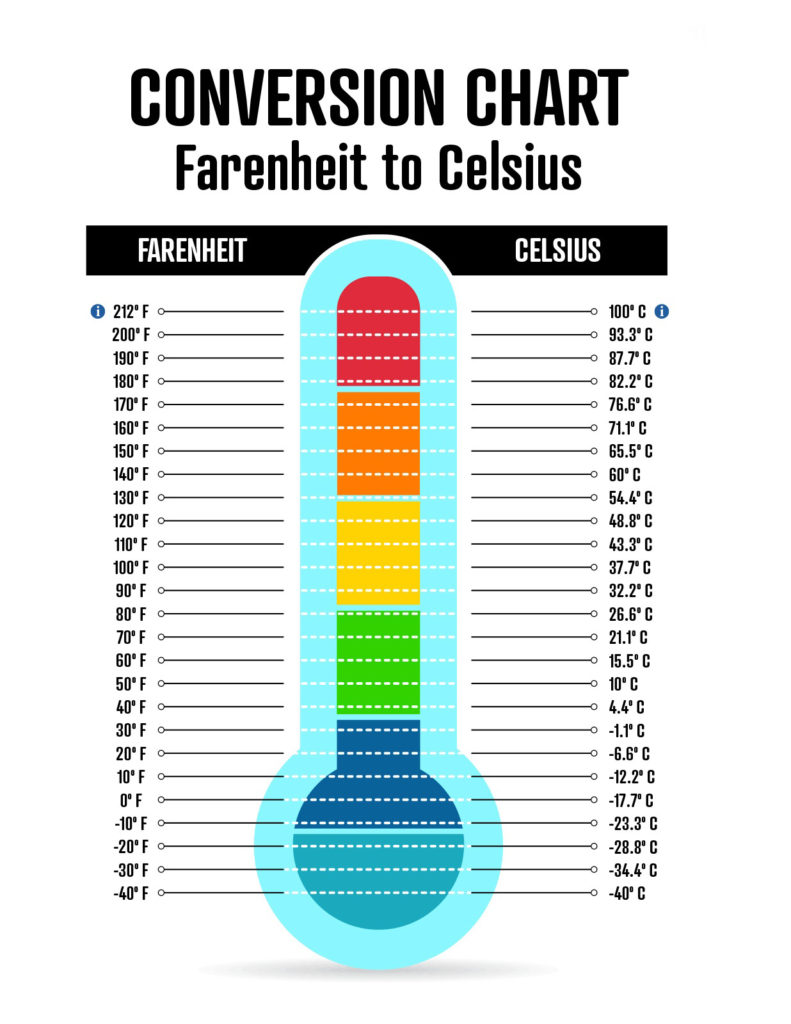
Celsius vs. Fahrenheit
There are three different systems for measuring heat energy (temperature): Fahrenheit, Celsius, and Kelvin. In scientific measures, it is most common to use either the Kelvin or Celsius scale as a unit of temperature measurement. Because the difference between the freezing point of water and the boiling point of water is 100° on both the Celsius and Kelvin scales, the size of a degree Celsius (°C) and a kelvin (K) are precisely the same. In contrast, both a degree of Celsius and a Kelvin are 9/5 the size of a degree Fahrenheit (°F). In the Celsius scale, the boiling point of water is 100°C, and the freezing point is at 0°C, while in the Fahrenheit scale the boiling point of water is measured at 212°F and freezing point at 32°F.
Once upon a (albeit brief) time, Fahrenheit was the only way of measuring temperature. In 1724, Daniel Gabriel Fahrenheit developed a scale to measure temperature. He set zero degrees as the lowest temperature at which he could get salt and water to mix, and he approximated the temperature of the human body as 96 degrees. Eighteen years later, Anders Celsius developed a second (and much more intuitive) system of temperature measurement—one which had an even 100-degree difference between the freezing and boiling points of water.
In the 18 years when Fahrenheit was the only temperature measurement, it gained a substantial footing around the world. The British Royal Society adopted it, and the UK spread it to its colonies, including the United States and Australia. But the compatibility of Celsius with the nascent metric system could not be ignored (since they were both based in multiples of ten). France spearheaded the adoption of the metric system and Celsius with it, and it spread to much of the world.
At the same time, the English-speaking world continued to hang onto Fahrenheit. In the 1960s, the UK finally officially began switching over to the metric system to be in step with the rest of Europe. America, though, made no such switch. It tried (half-heartedly) in 1975 with Congress’s Metric Conversion Act. This made adopting the metric system “voluntary,” and to no one’s surprise, people had no desire to voluntarily upend the systems of measurement.
There are a few other nations that still use the Fahrenheit system as well: the Bahamas, the Cayman Islands, Palau, the Federated States of Micronesia, and the Marshall Islands. Only three (U.S. Liberia and Myanmar) don’t use the metric system. Others use both systems—Belize, the British Virgin Islands, and Bermuda.
If you’re traveling to a country that measures temperature differently from yours, it’s helpful to know the conversion rates for Fahrenheit to Celsius and Celsius to Fahrenheit. To convert a temperature from Fahrenheit to Celsius, subtract 32, multiply by 5, and divide by 9. To convert from Celsius to Fahrenheit, multiply by 1.8 and add 32. No sweat, right?!
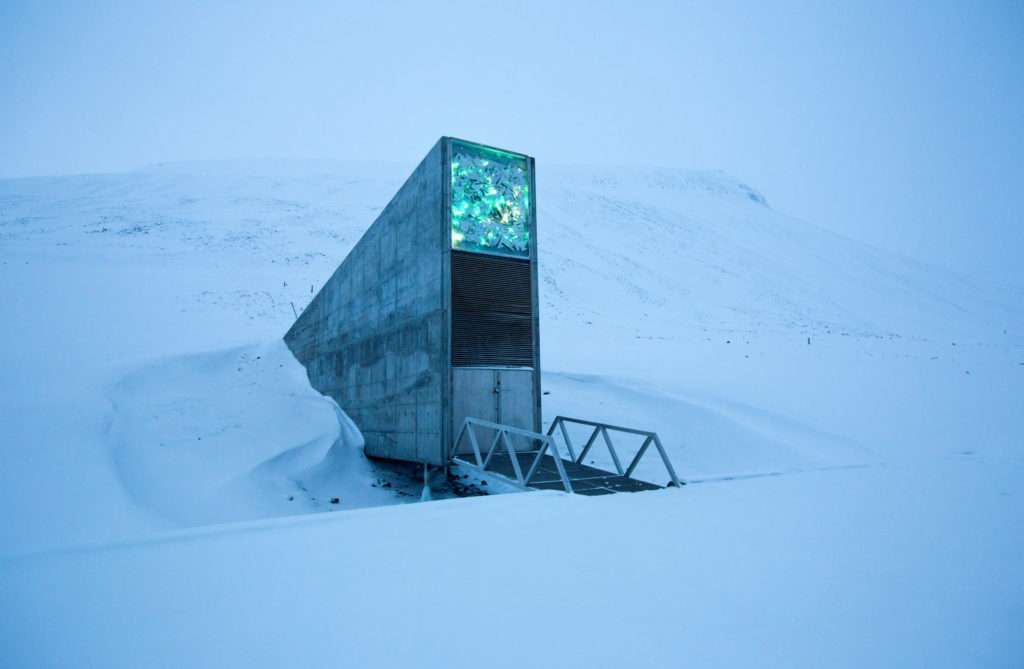
The Doomsday Vault
Deep in the bowels of an icy mountain on an island above the Arctic Circle between Norway and the North Pole lies a resource of vital importance for the future of humankind. It’s not coal, oil, or precious minerals, but seeds.
Millions of these tiny brown specks, from more than 930,000 varieties of food crops, are stored in the Global Seed Vault on Spitsbergen, part of Norway’s Svalbard archipelago. It is essentially a huge safety deposit box, holding the world’s largest collection of agricultural biodiversity. “Inside this building is 13,000 years of agricultural history,” says Brian Lainoff, lead partnerships coordinator of the Crop Trust, which manages the vault.
Over the past 50 years, agricultural practices have changed dramatically, with technological advances allowing large-scale crop production. But while crop yields have increased, biodiversity has decreased to the point that now only about 30 crops provide 95% of human food-energy needs. Only 10% of the rice varieties that China used in the 1950s are still used today, for example. The U.S. has lost over 90% of its fruit and vegetable varieties since the 1900s. This monoculture nature of agriculture leaves food supplies more susceptible to threats such as diseases and drought.
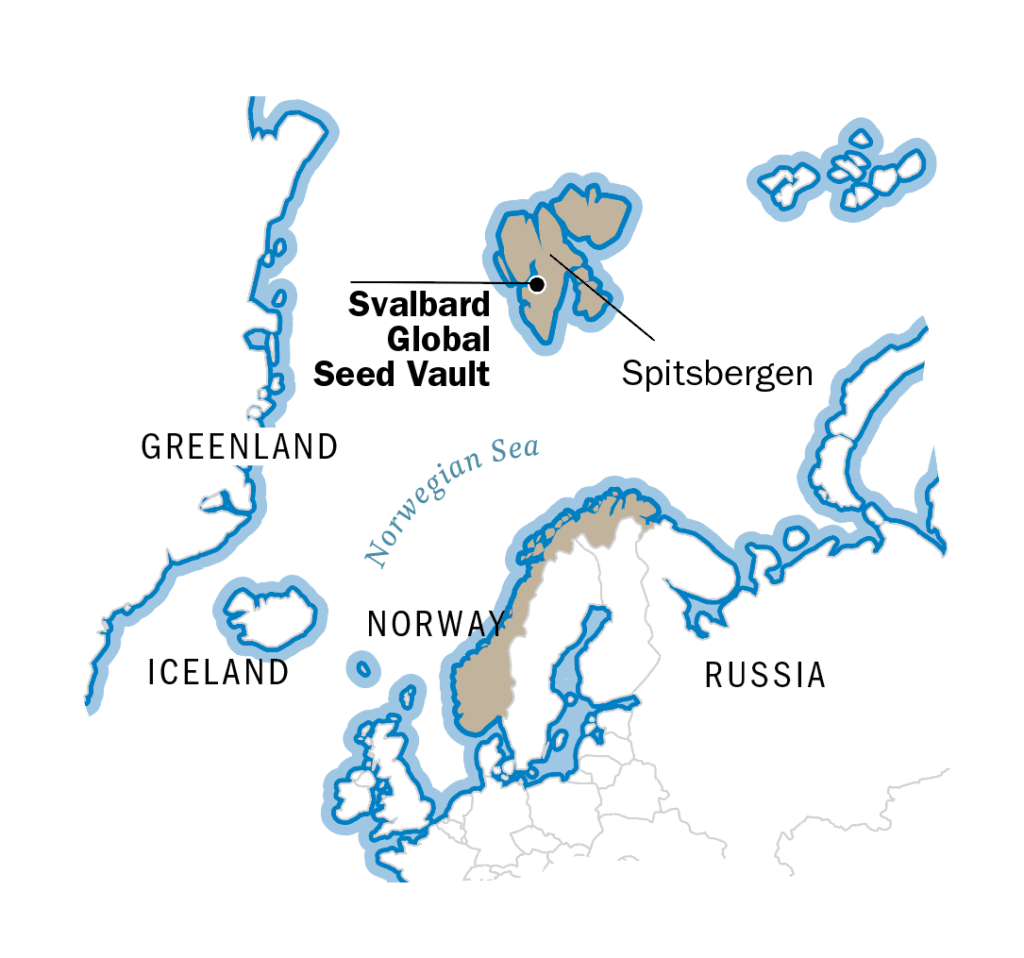
In an age of heightened geopolitical tensions and uncertainty, the Svalbard vault is an unusual and hopeful exercise in international cooperation for the good of humankind. Any organization or country can send seeds to it, and there are no restrictions because of politics or the requirements of diplomacy. Red wooden boxes from North Korea sit alongside black boxes from the U.S. Over on the next aisle, boxes of seeds from Ukraine sit atop seeds from Russia. “The seeds don’t care that there are North Korean seeds and South Korean seeds in the same aisle,” Lainoff says. “They are cold and safe up there, and that’s all that really matters.”

Figures of Speech
An epizeuxis is a figure of speech in which a word or phrase is repeated in immediate succession, with no intervening words. For example: In Hamlet, Hamlet responds to a question about what he’s reading by saying “Words, words, words.” Winston Churchill famously said, “”Never give in — never, never, never, never, in nothing great or small, large, or petty, never give in except to convictions of honor and good sense.”
An anaphora is a related figure of speech in which words repeat at the beginning of successive clauses, phrases, or sentences. For example, Martin Luther King’s famous “I Have a Dream” speech: “So let freedom ring from the prodigious hilltops of New Hampshire. Let freedom ring from the mighty mountains of New York. Let freedom ring from the heightening Alleghenies of Pennsylvania…”
An epistrophe is a figure of speech in which one or more words repeat at the end of successive phrases, clauses, or sentences. For example, in the Gettysburg Address, Abraham Lincoln urged the American people to ensure that, “government of the people, by the people, for the people, shall not perish from the earth.”
A diacope is a figure of speech in which a word or phrase is repeated with a small number of intervening words. The first line of Anna Karenina by Leo Tolstoy, “Happy families are all alike; every unhappy family is unhappy in its own way,”
An epanalepsis is a figure of speech in which the beginning of a clause or sentence is repeated at the end of that same clause or sentence, with words intervening. Example: “The king is dead, long live the king!”

Dystopia
A dystopia is a speculated community or society that is undesirable or frightening. It is often used as an antonym of utopia (a term coined by Sir Thomas More and the title of —published in 1516—which created a blueprint for an ideal society with minimal crime, violence and poverty. Dystopias are often characterized by rampant fear or distress, tyrannical governments, environmental disaster, or other characteristics associated with a cataclysmic decline in society. Distinct themes typical of a dystopian society include: complete control over the people through the usage of propaganda, heavy censoring of information or denial of free thought, worshiping an unattainable goal, the complete loss of individuality, and strong enforcement of conformity.

First Cousin | Second Cousin | Cousin Once Removed
You probably know what a first cousin is: you share a set of grandparents. You may even know that a second cousin means you share a set of great-grandparents (Third cousins share a great-great-grandparent, and so on and so on.
Second cousins are family. Unlike other relations with more generational gaps and fewer ancestors in common, they are not considered to be distant relatives. In the US, it’s legal to marry your second cousin, although it’s illegal to marry your first cousin in 31 states in the US due to genetic concerns. Surprisingly, that means it is legal in 19 states, and, by the way, Washington D.C.) [The average person has around 28 second cousins; of course, the number varies depending on the family and how many children the great-grandparent had.]
A ‘removed’ cousin is someone who is in a different generation than you. (People who are one generation younger would be in the same generation as your children; people who are one generation older would be in the same generation as your parents.) There are two ways you can be first cousins once removed: 1) When your first cousin is in the same generation as your children, and that cousin has a child, that person is your first cousin once removed; and 2) When your first cousin is in the same generation as your parents and he or she has a child (i.e., the child of your parent’s aunt or uncle), that child is your first cousin once removed.
If two siblings in one family marry two siblings from another family and each couple has a child, the children are double first cousins. The word ‘double’ in addition to the first cousin term is because they share the same four grandparents.

Doxing
Doxing (or doxxing) —short for “dropping dox”—is the act of publicly revealing previously private personal information about an individual or organization, usually via the Internet. It is an online attack in which hackers dig up personal information and documents (which explains the ‘dox’ part of ‘dropping dox’) often to shame, harass, embarrass, intimidate, or even coerce or extort a victim. Once people have been exposed through doxing, they may be targeted for harassment through methods (e.g., in-person, fake signups for mail and pizza deliveries, or through swatting—dispatching armed police to their house through spoofed tips.



